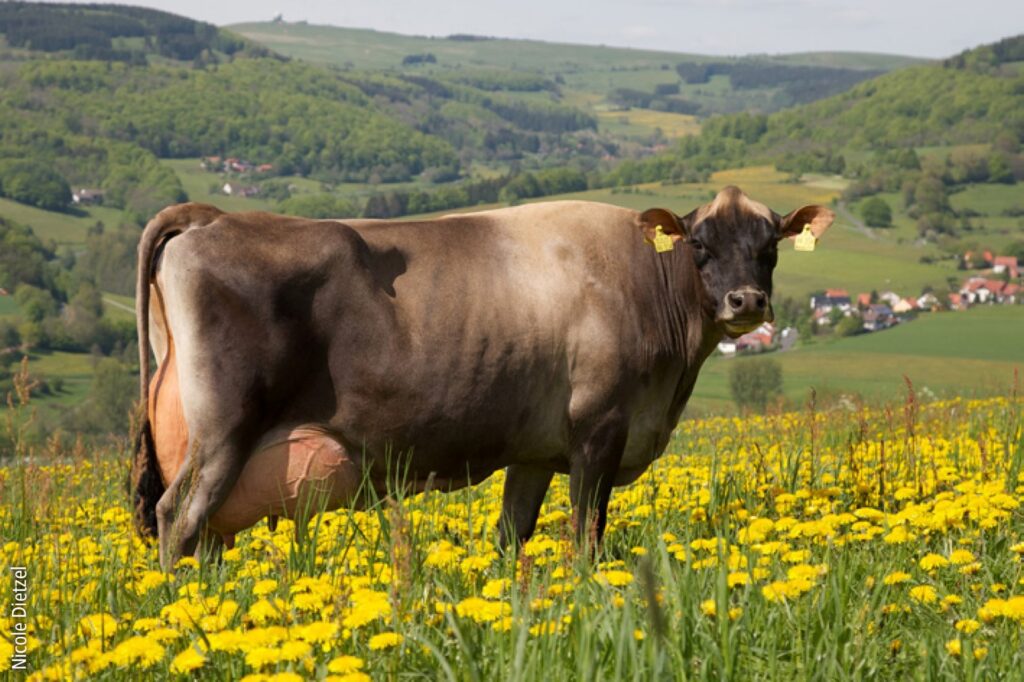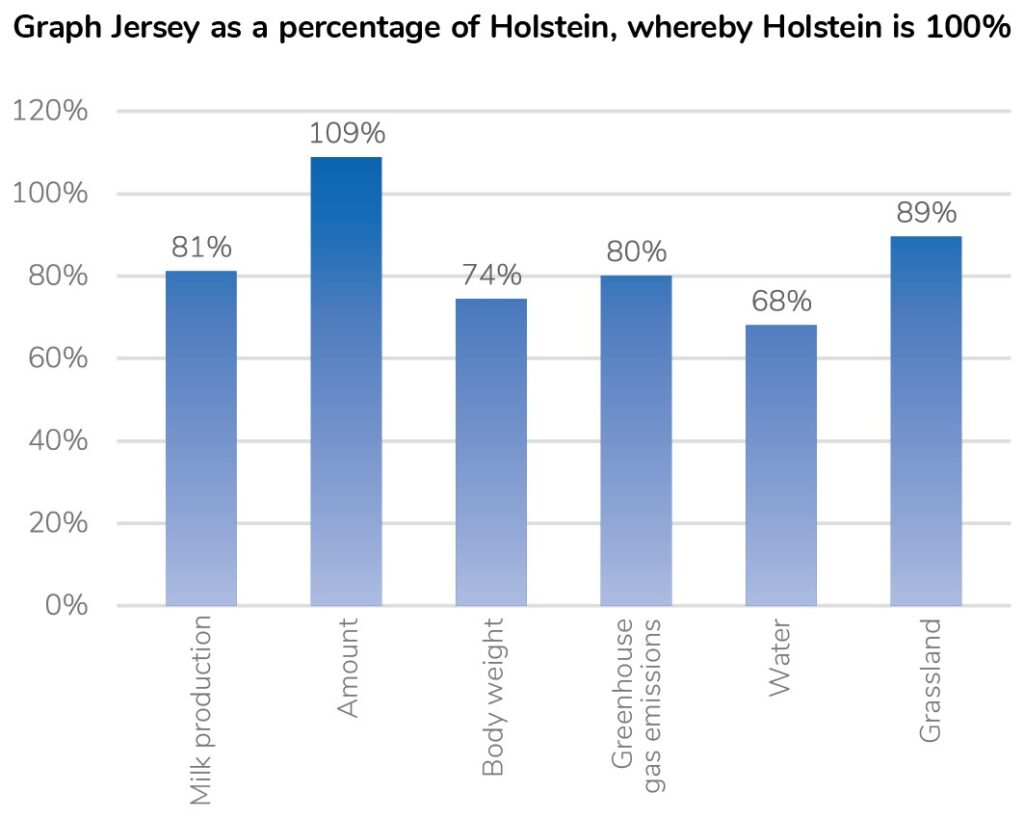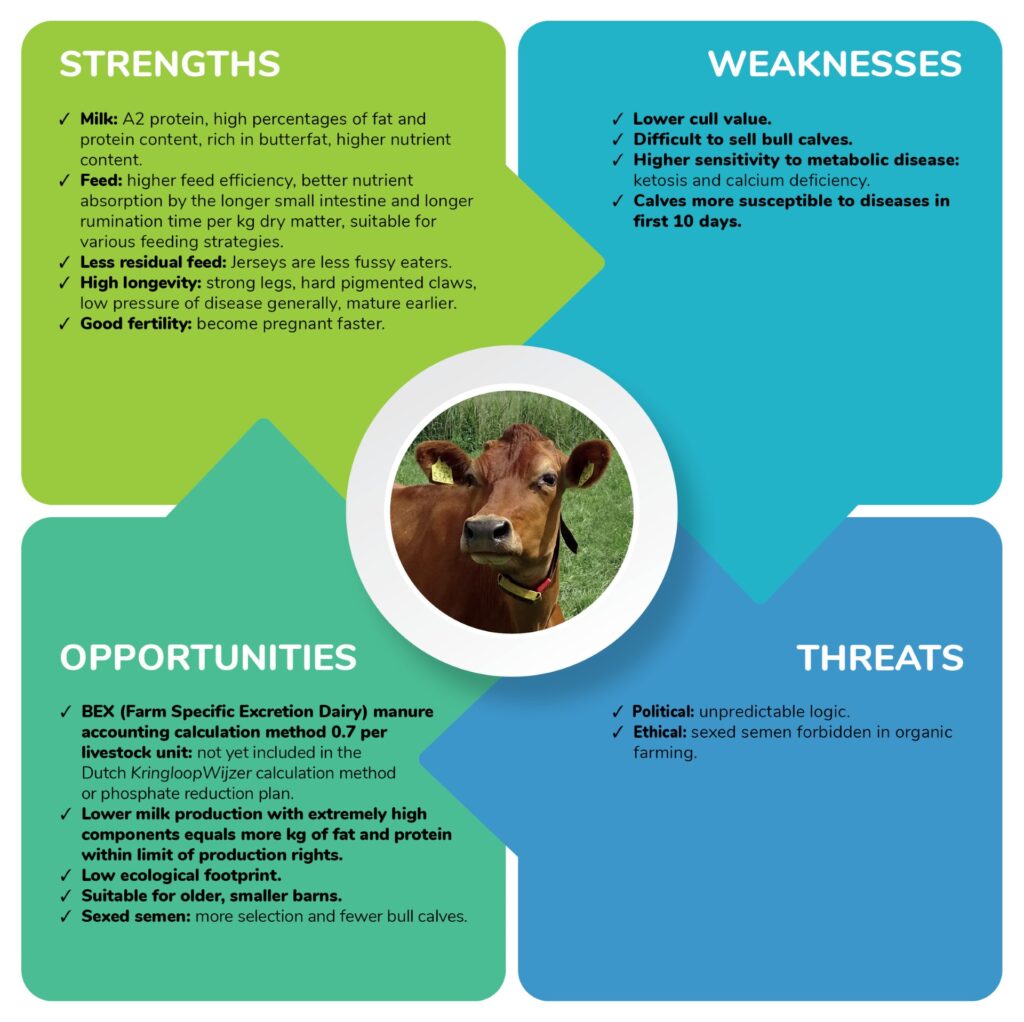Jersey on the increase worldwide
There is an increase in the Jersey population worldwide, including in the Netherlands and other local markets. In the past K.I. SAMEN had one or two of its own Jersey sires in the programme, alongside some imported bulls, but the number of Jerseys has grown rapidly in recent years. This rise is not just due to the increase in various export markets, but also a higher demand from our home markets. So why are Jerseys attracting more interest?

As we know, Jersey cows are a more favourable proposition in view of the phosphate rights in the Netherlands. You can have five Jersey cows in your herd compared to four Holstein cows. This calculation has already prompted various farmers in the Netherlands to switch to Jerseys. Another factor is that, with normal production figures, there is increasingly less difference in the total kilograms of fat and protein between the two breeds.
Most milk with the highest components per kg body weight
Jerseys are incredibly efficient feed converters. A unique trait of the Jersey cow is the feed intake in kilos of feed relative to their body weight. Among the range of breeds farmed in the Netherlands, the Jersey produces the most milk with the highest components per kilo of body weight.
American research
A study performed in the USA reveals the following data on the differences between an HF cow and a Jersey cow:

The study shows that 109 Jersey cows have the same cheese yield as 100 Holstein cows. Whereby, despite Jersey cows having 74% of the body weight and producing 81% of the amount of milk, their emission of greenhouse gases is 80% compared with Holstein cows. In addition, a Jersey cow requires 68% of the water and 89% of the grassland compared with the needs of a Holstein cow. This data shows that Jersey cows are more efficient at producing the same cheese yield through more efficient feed utilisation (Capper, 2010).
Higher feed efficiency
Research also reveals that Jersey cows have a higher feed efficiency than Holstein cows. The feed intake is lower while the utilisation rate for milk production is higher. In other words, the energy intake is lower and the energy required by a Jersey for maintenance and milk production is higher than a Holstein, so the percentage that is not utilised is lower. This boosts the feed efficiency of the Jersey breed and means that Jersey cows convert roughage more efficiently into milk than Holsteins.
Qualities and weaknesses
What other qualities do Jersey cows offer? Component-rich milk is not the only thing that generates additional milk revenue for farmers. Jersey cows have good quality legs and hard claws that function well in different management systems. However, there are some weaker traits such as the cull value and sensitivity to ketosis. All these factors have been presented in a SWOT analysis. This data is based on the practical experience of farmers who have switched to milking Jersey cows, or who milk both breeds, and is therefore not based on scientific literature.

SWOT Analysis of Jersey compared to Holstein Friesian.

